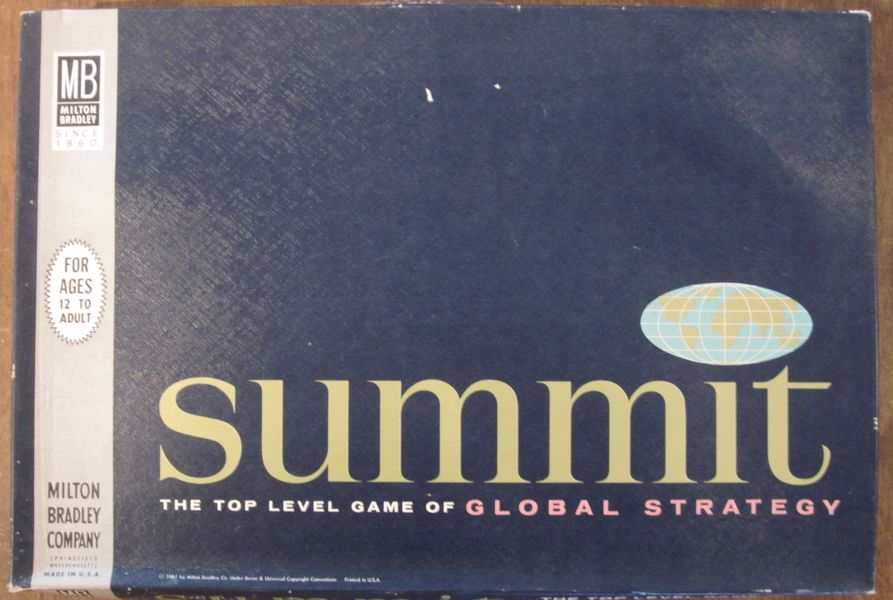Summit (1961) Board Game
Summit is a classic board game that was first released in 1961 by Milton Bradley. It was designed by Cameo Games and has become a favorite among fans of economic, negotiation, and political games. The game has stood the test of time and continues to be enjoyed by players of all ages.
Game Components of Summit
How To Setup Summit
Setup involves each player selecting a major power and placing their tokens on the board. The board is divided into regions, each with its own economic and military value. Players receive initial resources and chips based on their chosen power. The game also includes a small circlet holder with colored flags to track alliances, though this is often viewed as a gimmick.
Gameplay Mechanics and Game Objective
Player Experience
Playing Summit requires a balance of social skills, economic knowledge, and military tactics. Players must navigate the complexities of Cold War geopolitics, managing resources, forming alliances, and responding to global events. The game is known for its strategic depth and the need for careful planning and negotiation.
Pros
Cons
Personal Thoughts on Summit
Summit is a game geared towards adult players who enjoy complex strategy and historical themes. It is ideal for those interested in the Cold War era and who appreciate games that require a blend of economic, military, and social strategies. The game’s ability to simulate real-world geopolitical tensions, such as the Cuban Missile Crisis, adds a layer of realism and depth that will appeal to history buffs and strategy enthusiasts alike. However, its complexity may deter casual gamers, making it more suited for experienced players looking for a challenging and immersive experience.
We are supported by our audience. When you purchase through links on our site, we may earn an affiliate commission, at no extra cost for you. Learn more.

